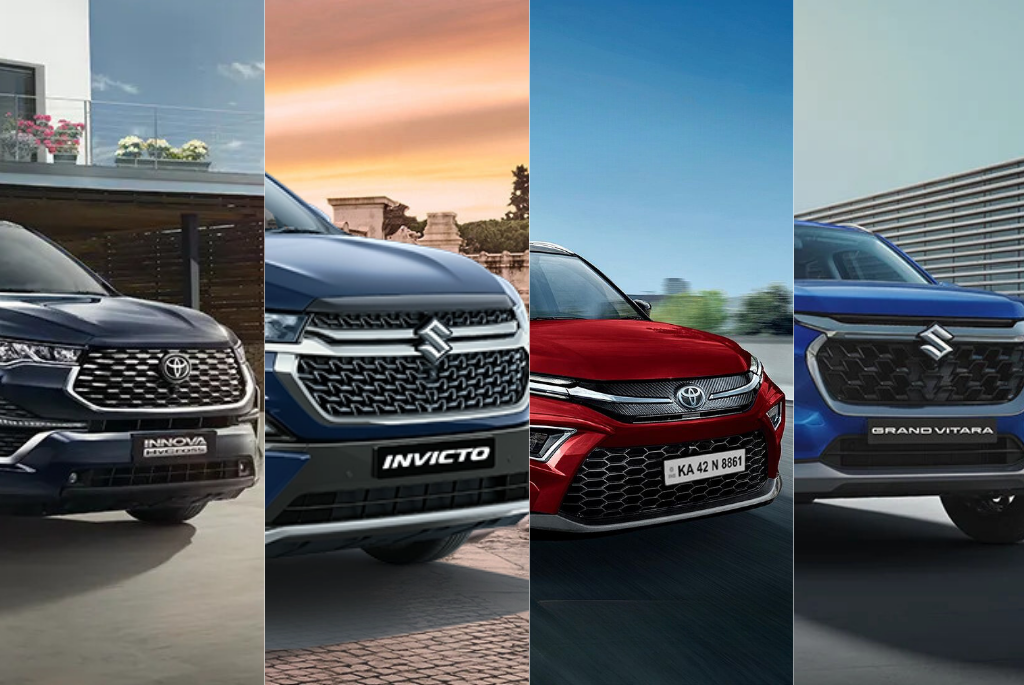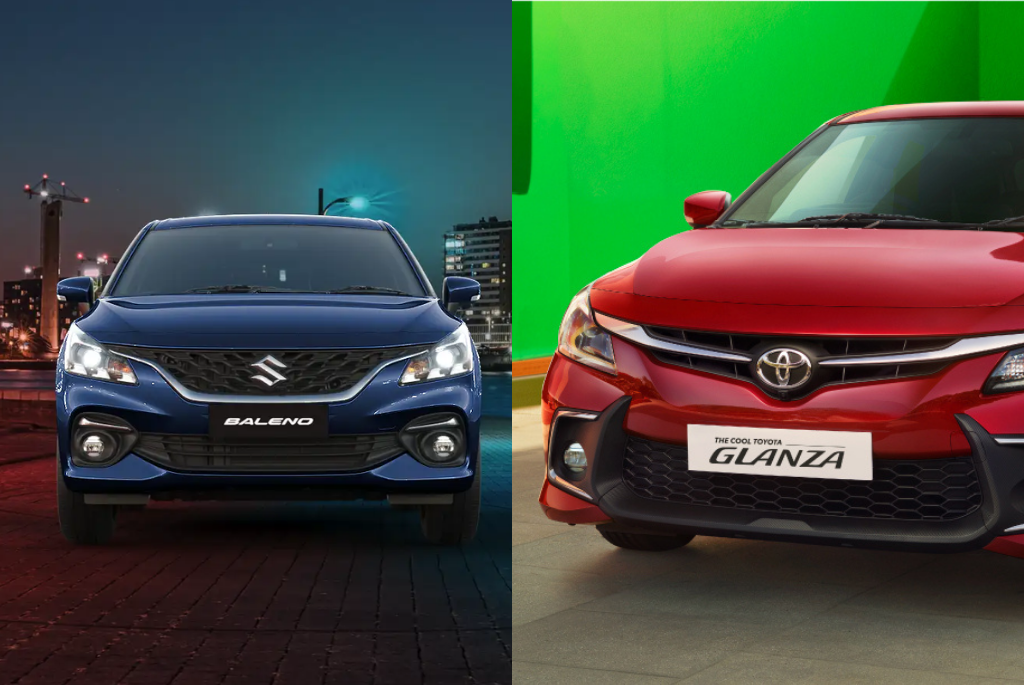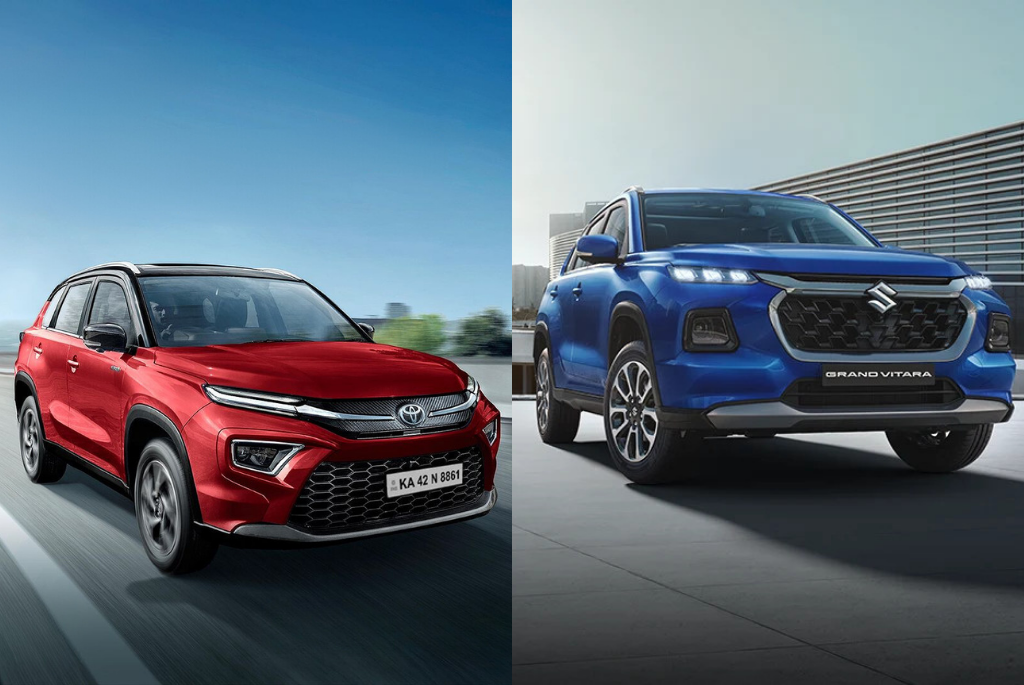
Ever wondered why the crowd favorite Baleno from Maruti Suzuki looks exactly similar to Toyota’s Glanza? Or does Toyota’s Urban Cruiser Hyryder look like an identical twin of Maruti Suzuki’s Grand Vitara? Are they copy paste or is there a partnership between these two companies?
Well, we are here to address the questions in your mind. Toyota and Suzuki cars do look similar because they are collaborative partners. Read this article till the end to find out interesting facts about their partnership.
Suzuki and Toyota Partnership:
Toyota Motor Corporation and Suzuki Motor Corporation signed a Memorandum of Understanding (MoU) of a business alliance in 2017. This MoU allows both companies to use each other’s strengths for their own benefit. Toyota’s strength: technology in the electrification of cars. Suzuki’s strength is that it manufactures compact and fuel-efficient cars.
Toyota and Suzuki mainly follow the rebadging technology to produce identical cars. It helps them to market their cars better and increase sales.
What is Rebadging Technology?
In the automobile industry, rebadging technology is a strategy that car manufacturers follow to save time and resources. The process involves taking an already existing model, making some minor changes, and selling it under a different badge or brand name.
Here is the breakdown of the rebadging process:
- Suppose manufacturer A creates the design of a car, engineers it, and develops it. Manufacturer B then licenses the design and platform from manufacturer A.
- At times, manufacturer B decides to make some minor changes in the cosmetic features of the car. For example, changing logos, bumpers, grille, taillights, infotainment systems, etc.
- After making all the minor changes, manufacturer B then sells the car under its name.
List of Some Rebadged Cars from Toyota and Suzuki:

Here is the list of some Maruti Suzuki-Toyota collaboration cars:
- Toyota Glanza, rebadged from Maruti Suzuki Baleno (Hatchback).
Being a rebadged version of Maruti Baleno, Glanza shares various common features:
The exterior dimensions, aerodynamics, and silhouettes look identical. There could be minor changes in the grilles, bumper, and headlights.
Both the cars share the same 1.2-litre K-Series Dual Jet Petrol engine with both automatic and manual transmission options. As they share the same engine, both of these cars offer the same fuel efficiency.
The interior designs, cabin space, and boot space are also kept the same in both cars. There could be minor changes in the materials used in the interior of the cars.
Additional features include an infotainment system, smartphone connectivity, automatic climate control, power steering, keyless entry, safety features like number of airbags, and an Anti-lock Braking System (ABS).
- Another example of Toyota Suzuki collaboration is the Toyota’s Urban Cruiser Hyryder rebadged from the Maruti Suzuki Grand Vitara (SUV).

Being a rebadged version of Maruti’s Grand Vitara, Toyota Urban Cruiser Hyryder shares the following common features:
Both cars share the same platform and core engineering. As a result, both of them will offer a similar driving experience, suspension, and handling.
The exteriors of both cars look similar, with minor differences in the front grille, headlights, taillights, and bumper.
Both Toyota Urban Cruiser Hyryder and Maruti’s Grand Vitara share the same 1.5-litre mild-hybrid petrol engine and stronger hybrid powertrain with both automatic and manual transmission options.
The inner layout, cabin space, boot space, and dashboard in both SUVs seem similar. However, the choice of materials used in the interiors might vary in both cars. OH! Don’t forget to read our article on Maruti Suzuki swift 4th Gen.
There are some additional identical features in both the cars, such as automatic climate control, sunroof, and touchscreen infotainment system. Some safety features, such as the number of airbags and ABS, are also identical in both cars.
How did the Toyota -Suzuki partnership help these companies?
Here’s how the Maruti Suzuki-Toyota partnership has helped these two companies:
Benefits for Toyota:
- Market expansion- Toyota was always known for manufacturing SUVs in India. By signing this partnership deal, Toyota has successfully expanded its market and has gained customers who prefer hatchbacks.
- Cost-effectiveness- Rebadging has helped Toyota cut down on its expenses and resources in engineering a car from scratch.
- Compact car expertise- Toyota has gained expertise in the compact car segment by joining hands with Maruti Suzuki.
- Electrification
Benefits for Maruti Suzuki:
- Hybrid technology- Through this partnership deal, Maruti has gained access to Toyota’s hybrid technology.
- Brand recognition- Joining hands with a brand like Toyota has given improved brand recognition to Maruti Suzuki.
- Cost savings- Rebadging helps in cutting down the cost of manufacturing a car from scratch. Hence, it helps Suzuki offer good cars at a competitive price.
The overall benefit for both:
- Innovation- Both companies get access to each other’s innovations and jointly collaborate in their own areas of weakness.
- Efficiency- Both companies benefit from their individual strengths.
- Competitive edge- This partnership allows Toyota and Suzuki to remain competitive in the global automotive market.


